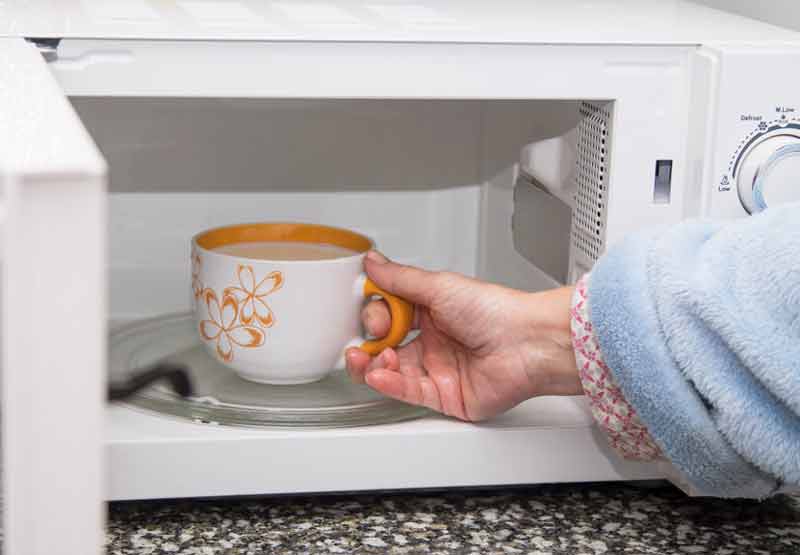You may have heard that you can’t put pottery in the microwave. But how do microwaves work? Microwaves are just electromagnetic waves, and they don’t care what is between them and their target. They will heat anything they can get close to. The problem with putting pottery in a microwave is not the microwaves but the uneven heating of your dish.
Pottery can be microwaved, but it’s not recommended. Microwaves can cause the glaze to melt and create a mess in your microwave. If you’re going to put pottery in the microwave, make sure that it has a heat-resistant glaze or is made of stoneware.
You don’t want to ruin your favorite dishware by putting them in the microwave so make sure you always know what kind of dishware you have before microwaving it.
Be careful when microwaving dishes with glazes as they may melt from the high temperatures.
Is Pottery Microwave Safe?
Pots can be used in microwaves, but it’s important to understand that glazes are different at high temperatures so some may not be suitable for cooking. Pots with leaded glazes are the most harmful. But if you have a dish with a leaded-glaze or other chemicals on it, don’t wash the dishes before warming them up since heat will release any chemical vapours into your home.
It is generally safe to put your pottery in the microwave but just like every other material pottery also has its limitations. The pottery is breakable and can crack if there is a sudden shift in the temperature.
The glazes that are used on the pottery can contain harmful chemicals which when heated emits vapors in your microwave. The clay and minerals in the clay will absorb all these fumes and can harm you in the long run.
Tips
- Check the label – before using a dish or a mug always look for a “microwave safe” label which is generally found on the bottom of the ceramic mug or dish, it can be any sign or just two parallel lines. You can also check at the box when you buy it that whether it is microwave friendly or not.
- Test the unlabelled dishes – sometimes the pottery dish doesn’t have a label and also you don’t know how to find which brand it is. In that case, all you have to do is to fill a microwave-friendly cup and the cup which you want to test with water and place both of them in the microwave for 1 minute. After a minute you have to take both of them out and check the difference between them by touching them if there is no difference then you can use the cup without worries.
Make sure that you do not microwave cold storage containers and plastic packets. These types of food are meant for refrigerated items and you are not supposed to heat them.
Can Handmade Pottery Be Microwaved?
Yes, you can microwave handmade pottery! Pay careful attention to the type of pottery and utensils used so there are no cracks or chips. Place on a microwavable safe surface like ceramic plate before cooking.
Organic clay is known to be microwavable because it’s porous and does not hold in radioactivity, though some say that this isn’t true with newly fired materials.
Ceramics with added glaze may be metal detectable (check if copper, iron or lead was used in the production of your kitchenware), but this will often depend on whether there is an additional layer of glaze or lacquer applied.
Now, you might be thinking about how to test the pottery. Here are some ways in which you can do the test.
- Fill water – you can put some water in the pottery and check if there is any leakage. If there is no leakage then you can put your homemade pottery on a dish and microwave it at a high temperature for 1-2 minutes.
- Touch test – after putting the homemade pottery in the microwave take it out with the help of oven mitts and then check whether it is warm or not, if the cup is warm and the water is cold then it is not microwave-friendly cup.
- Label – always put a label or a mark with the help of a permanent marker to keep track of your microwave-friendly dishes. Try to label any emoji or a shape that you want on the bottom of the dish so that it can be easy for you to identify.
Non-microwavable materials can easily crack, melt or even damage the microwave. They not only lead dangerous chemicals into the food but also they can cause fire, It is always better to check the dishes before using them.

